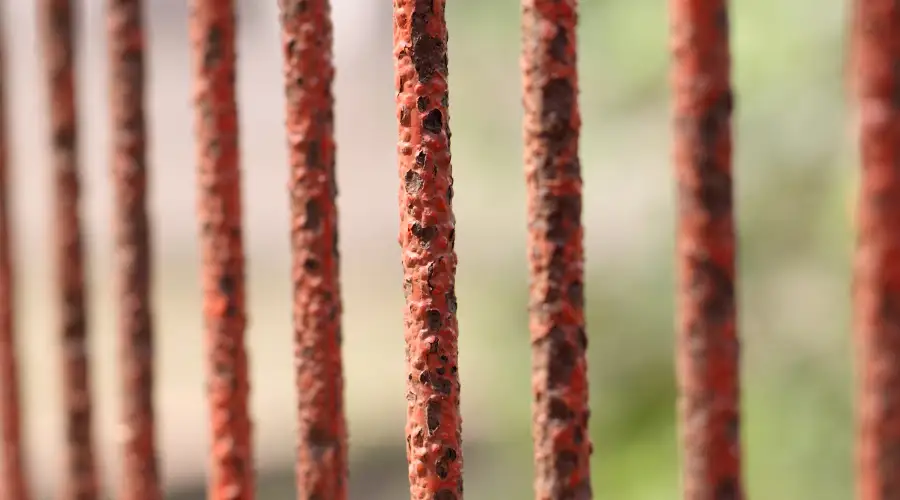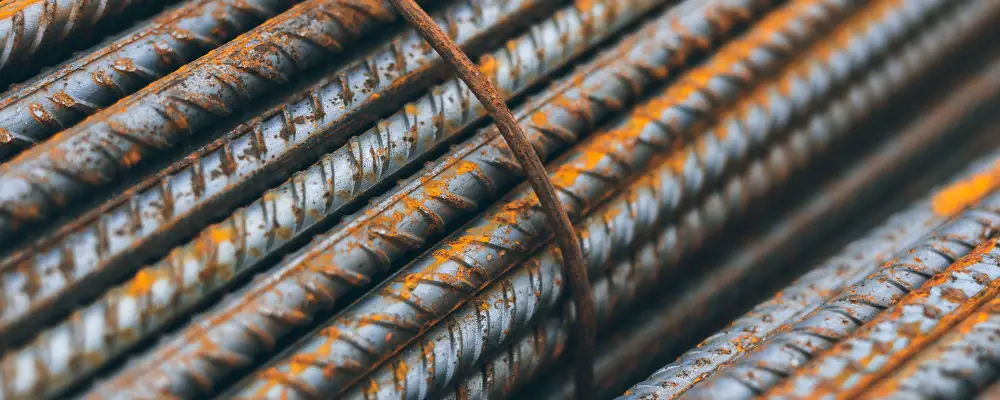Is steel rust a problematic thing to take into consideration? This is the question often asked by many while involved in building construction. Of course, rust formation is a serious concern; it is unavoidable on metal surfaces when they react with water and oxygen.
Today, steel is the most widely used metal in a diverse range of applications like structural steel, thanks to the impressive properties of steel. The higher the quality, the less likely your metal is to rust. This means that you want to be aware of the metal quality before you start constructing.
In this article, you are about to learn about steel rust and how potentially it can be prevented.
What is Steel Rust
Steel rust is a form of corrosion sediment over the surface of iron or its alloy, like steel. The metal turns a reddish-brown color when it exclusively reacts with oxygen and water. This reaction happens due to an electrochemical process during such time the iron atoms lose electrons and oxygen atoms gain them. It makes the metal weak over time, leading to less durability.
Why Steel Rust is a Concern in Construction
Steel rust or corrosion potentially weakens the structure, causing failure of structural integrity and costly repairs and maintenance. When the metal rusts expands, you are more likely to unlock these problems:
- Loss of Structural Strength: Corrosion over the metal naturally degrades its strength and durability. It weakens the steel component and load-bearing capacity, leading to deflection, deformation, and collapse. When it is a reinforced concrete structure (RCC), the effect will be even more severe. The structures lead to losses in the strength of slabs, beams, and columns.
- Create Concrete Damage: Rust expansion on the steel bars put excessive pressure on the surrounding concrete, resulting in spalling and cracking. It compromises the actual concrete quality and weakens the structure over time. If they are not supposed to be repaired early, the environmental factors accelerate the corrosion process further.
- Increased Repair and Maintenance Cost: Rust formation often needs repair or replacement to avoid significant damage. The cost of repair and maintenance is a bit costlier, such as repairing concrete, applying protective coatings, or replacing corroded metal.
- Safety Hazards: Weakened concrete structure creates direct risk to the occupants and the public. We may expect sudden damage or failure when the corrosion expands over the metal. It is highly recommended to repair or replace the damages and cracks once identified.
- Affect Aesthetics: Steel is primarily considered for its aesthetic appearance. When it is corroded, the building loses its overall strength and appearance and is difficult to retain.
Causes of Steel Rusting

As stated earlier, steel corrosion happens due to the chemical reaction known as oxidation. During this process, the iron in steel and the moisture content in oxygen react together, leading to the formation of iron oxide. Though oxygen and water are the significant reasons for corrosion, there are some factors that support the rusting process:
- When steel is continuously exposed to oxygen and moisture, it creates iron oxide (rust) on its surface.
- Environmental factors like higher temperature, salt water, humidity, and acidic substances accelerate the oxidation process between iron and oxygen, leading to rapid rust formation.
- Surface conditions and impurities over the surface are one kind of reason that trap chemicals and moisture together and form localized corrosion.
- Choosing the wrong material can lead to issues like Stainless Steel Rust, which weakens steel over time, causing potential damages such as cracking, pitting, and even structural failure in the future.
- Poor construction design and practices can also provide a direct pathway to corrosion. To avoid your steel products from getting rusted, plan your structure with proper strategies.
How to Prevent Steel From Rusting
Rust prevention is crucial in construction to significantly ensure safety, structural integrity, and lifetime. By implementing these primary methods, you can effectively prevent the steel from rusting. Here are those:
- Add Protective Coating: A coating of good-quality paint or dry powder such as prevents the contact of iron in the steel and moisture in the oxygen. This method creates a strong and durable layer over the surface, which slows down the rust formation.
- Environmental Condition: We know the moisture content is a primary reason behind the rust formation. By reducing the humidity levels, you can actively prevent the oxidation process. So, it is advisable to ensure the steel stays dry and moisture-free.
- Surface Maintenance: Your duty does not just end with the building construction. To improve its longevity, adequate cleaning and maintenance are required. Remove dirt, dust, and debris on the surface, which prevents the steel from exposure to moisture content. Conduct regular inspections to address the damage or cracks early and prevent them from expanding.
Methods to Remove and Repair Rusted Steel
Timely repair and replacement are effective ways to prevent rust and its significant causes, such as degradation and structural failure. If you are engaged in the construction process, being aware of these points will be useful in the future. Let’s have a look at them:
Understand the Depth of Rust: Conduct a visual inspection before getting into the removal or repairing process. Understanding the depth and severity of rust and its underlying issues gives a path to figure out the right applicable methods.
Mechanical Rust Removal Process: This method involves physically removing the rust or corrosion from the steel. You can use sandpaper, wire brushes, abrasive blasting, or an angle grinder, according to the surface condition.
- Wire Brushing: Manual or power wire brushes can be a choice to remove loose, light, and superficial rust formation, especially in the easily accessible areas.
- Sandpaper: Use sandpaper to remove the rust sediment over the steel surface and prepare it for further treatment.
- Angle Grinder: This is one of the crucial techniques to remove the rust on larger surfaces, like in industrial settings.
Chemical Rust Removal Process: Using chemicals physically dissolves or converts rust formed over the steel surface. You can consider the severity of rust and apply appropriate DIY solutions, rust converters, or removers to clean and remove the rust. Some of the effective home remedies mentioned below:
- Baking Soda: Mix baking soda with water till a paste consistency and apply on the rusted area. Then use a brush or scouring pad to scrub and remove the rust.
- Vinegar: White vinegar is an efficient rust remover. You can directly soak the rusted item in vinegar and leave it for several hours, which can completely dissolve the rust.
- Citric Acid: Similar to vinegar, citric acid is another easier method to loosen the rust. Mix a solution of citric acid with water to soak the rust item in it. Following the scrubbing can completely remove the rust.
Other Methods: Beyond regular methods, simplify your efforts with advanced techniques like laser cleaning. It is highly precise, contains no abrasive chemicals, is non-contact, and creates minimal waste, suiting it well for large-scale construction.
Repairing Process of Rusted Steel:
- Welding: Welding is essential for repairing severely rusted or perforated steel. It is used to reinforce weakened areas or to reattach separated sections, restoring structural integrity.
- Patching: In order to repair the smaller holes, body filler can be applied. After the processes of rust removal and priming, it helps retain the actual surface shape.
- Epoxy: Epoxy method can be primarily used in smaller areas to reconnect and reinforce broken steel sections.
Last Few Words
Rusted steel components are essential to be treated early to prevent severe damages and cracks. You can seek the assistance of a qualified structural engineer to conduct an examination and determine the appropriate repair strategy. Even after the repair and removal, you need to have a regular inspection and maintenance to catch any signs and prevent further causes.

